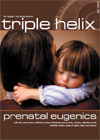Midway through the nineteenth century, a new force emerged in Western missions to Africa and Asia – the medical missionary. Prior to that time, doctors, nurses and others with training in the healing and caring arts had travelled with missions to the far flung parts of the world, but only as an adjunct to the primary task of 'winning souls for Christ'. But a seismic shift in missiology and praxis occurred as mission societies were set up with the express aim of providing medical services to the world's poor.
Grundmann's scholarly work looks at the sources of this movement – from the nursing and medical monastic orders of the Dark and Middle Ages to the early medical missionary work of the Spanish and Portuguese Jesuits of the sixteenth century, through to the Catholic nursing and missionary orders of the seventeenth and eighteenth centuries. But it was with Peter Parker and the Medical Missionary Society in China in Guangzhou (Canton) that the modern, protestant/evangelical medical missionary movement began. Forced by the Chinese authorities into the small Euro American enclave of Canton, with limited access to the Chinese population, the small number of missionaries found that provision of medical service offered the one opportunity to reach out the local population. Parker became an enthusiastic advocate for this strategy, and soon medical missions began to grow up either as separate societies (for example the Edinburgh Medical Missionary Society and the Medical Missionary Association), or as part of existing missionary societies.
This book looks at the other key figures in the development of nineteenth century medical mission, particularly from the UK and the USA, but also Dutch, German and Danish medical missionaries, at their achievements and wider impacts. And he asks probing questions about medical missions – did they succeed in the missionary task? What was the view of medical mission and medical missionaries held by the wider mission and Christian communities? Not all the answers he comes to are comforting; yet, despite his strong critique, Grundmann is undoubtedly an enthusiastic advocate for medical mission himself.
This is not light reading – the main text and very extensive appendices and references formed the basis of a PhD thesis – so it is not best approached as a motivational book on mission. But for the serious student of medical mission, and for those wishing to grapple with the roots of the twentieth/twentyfirst century wave of healthcare mission, this book forms an extremely valuable source of detailed background information. It reveals how many of the strategies, questions and struggles being faced today by those using medical skills in the mission field are echoed in the experiences of the past.
































